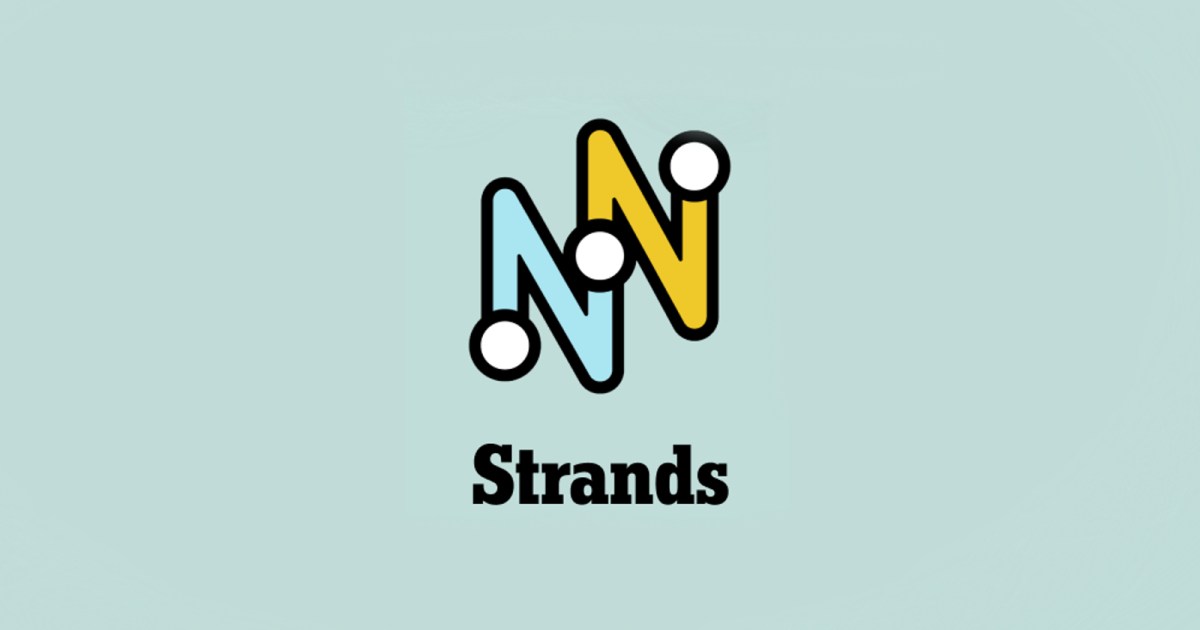The room where it happens has metal beams and harsh overhead lighting. Paper whizzes through conveyor belts on large gears near tall, human-sized cages with keypad locks.
Technology
Can Philadelphia’s ballot counters outrun election lies?

Though it resembles one, this is not a factory. It’s Philadelphia’s mail-in ballot-counting facility, where somewhere around 200,000 votes are expected to be tallied beginning on Election Day. The longer that tally takes, the more misinformation could seep into a deep well of paranoia and distrust over the democratic process — one that overflowed four years ago in a violent attack on the US Capitol.
The stakes, you could say, are high.
Pennsylvania’s 19 electoral votes could decide whether former President Donald Trump or Vice President Kamala Harris wins the 2024 presidential election. Many of the state’s ballots have already been cast through the mail. Yet Pennsylvania’s laws prohibit even beginning to process mail-in ballots until 7AM on Election Day. The result can be a serious delay in reporting election results — in 2020, The Associated Press didn’t call Pennsylvania as having been won by Joe Biden until four days after Election Day.
The state’s solution is a downright industrial ballot-counting process, which elected officials invited reporters to preview (using test ballots for demonstration purposes) in late October. It’s a highly regimented process that takes place in a sprawling warehouse in northeast Philadelphia, filled with the sounds of whirring ballot-sorting machines and the constant rifling of paper. On Election Day, workers will open hundreds of thousands of mailed ballots and feed them into machines that read and count them, keeping a careful eye on monitors flagging any irregularities. The scanned ballots will also be watched by election observers from each political party. “We do it right,” says Philadelphia City Commissioners chair Omar Sabir, a Democrat.
“The more people hear things, unfortunately, the more inclined they are to believe them.”
The city’s press tour is part of a broader effort to educate voters and reassure them that voting is safe, secure, and trustworthy. It’s an attempted bulwark against false claims about ballots being inaccurately tallied, flipped, or destroyed to skew election results.
Lisa Deeley, Democratic vice chair of the Philadelphia City Commissioners, says she doesn’t expect as long of a delay as 2020. Mail-in voting was an unusually popular option that year due to the ongoing covid-19 pandemic. But when conspiracies can ricochet across social media in seconds, every hour counts. “The more people hear things, unfortunately, the more inclined they are to believe them,” she says.
As Deeley explains, election workers are “starting from brick one” on Election Day. That means not just tallying who votes for whom, but reviewing the signatures on sealed envelopes, removing them from their secrecy sleeves, and flattening the ballots themselves. Commissioners have been “begging” for reforms to this process, Deeley says. Absent these changes, they’re left with technical and procedural solutions like buying new equipment and relying on more experienced election workers — shaving time off the clock any way they can.
“We know that the eyes of the world are going to be on Philadelphia,” City Commissioner Seth Bluestein, a Republican, told reporters gathered in the warehouse. “We are going to run the safest, most secure election in Philadelphia history.”
The process of tallying ballots — as I and other reporters see, shuffling behind Sabir around the 360,000-square-foot room — starts with what looks like an oversized Xerox machine. It feeds ballots in sealed envelopes into a conveyor belt on two gears and spits them out across a long track, sorting them into different slots based on ward and division. The machine scans barcodes on the envelopes, each one linked to a registered voter’s ID to mark the ballots as “received” so one voter can’t send multiple votes. If it was mailed without a signature or not placed in its included secrecy envelope, it’s set aside and added to a list that voters can check, letting them correct the problem with a replacement ballot.
This is as far as workers can get before Election Day, so the sorted envelopes go into secure storage until the morning of November 5th. Then, at the crack of dawn, the count begins. Twenty-two envelope extractors, built around desks where workers will help separate the envelopes from their contents once opened, run about 1,000 envelopes each per hour. Four rapid slicing machines open the yellow secrecy envelopes inside those envelopes at a rate of about 10,000 per hour. Workers remove the ballots from the now-opened secrecy envelopes — and since this process is separated from when the ballots are removed from their outer envelopes, it ensures votes stay anonymous. Now patted flat, the ballots reach the step this whole process is building up to: the count.
An election scanner is basically a gigantic Scantron machine, with a stretched-out metal S-shape that ballots glide through as the machine reads the marks voters have made. This warehouse has eight high-speed scanners, each one expected to check about 2,500 ballots per hour. (Four additional slower scanners can read 1,000 per hour.) Some ballots can’t be read — if they’ve been marked with a light-colored pen or had mistakes erased with Wite-Out, for instance. A staff of nonpartisan civil servants review these and mark the voter’s choices onto replacement ballots, which can then be scanned.
Election observers — who are selected by each party — will watch screens showing the ballots to help ensure everything is adjudicated fairly. Finally, the processed ballots go into another locked storage area. They will ultimately be kept in long-term storage for the 22 months mandated by law — just in case they’re needed for a recount.
As this count is taking place, an opposing process will be spinning up: a disinformation apparatus that aims to convince voters the election is being rigged.
In 2020, this process coalesced into the “Stop the Steal” election denial movement, culminating in an attempt to overturn the election of President Joe Biden by force. In 2024, it’s already gotten started. A group of Republicans including House Rep. Scott Perry (R-PA), who voted to sustain objections to the 2020 election results, sued Pennsylvania’s state government, demanding military and overseas ballots be set aside because of what election experts call unfounded doubts about the process. (It was also recently tossed by a judge.) Election deniers have gained seats on important state and local bodies that could give them leverage over election certification. And online, Trump mega-donor Elon Musk has set up an X community for reporting “voter fraud and irregularities,” which has already filled up with unfounded claims.
For Philadelphia’s City Commissioners, misinformation is personal. Sabir smiles as he relates one of the “craziest” conspiracy theories: a blog post that claimed he was personally taking ballots to a mobster in Atlantic City, New Jersey, to be destroyed. (It’s not clear why the mobster needs them trucked out more than 60 miles just to be shredded.) “We’re not doing crazy stuff. We’re just trying to come to do our job for the American people,” Sabir says.
The threats aren’t always amusing. Bluestein told The Verge that, while ballots were being counted in 2020, he received antisemitic threats. The harassment got so bad that Bluestein had police protection at his house the week of the election.
So far, “the heat is down” in 2024, he says. But election officials around the country are still on high alert. In Maricopa County in Arizona, another swing state, an official recently said security will be available to escort election workers to their cars. The state is also preparing for cutting-edge risks like infiltration by artificial intelligence scams, a scenario the staff roleplayed last year.
Social media platforms “are not doing as good a job as they did in 2020” with combating misinformation
Bluestein himself is trying to spot and call out false information online. In one case, he debunked an allegation — shared on X by Musk — that a nonprofit offering services to low-income and houseless individuals harvested thousands of mail-in ballots from one address. (Bluestein says “fewer than 150 ballots” were mailed there in 2020.)
His active role online is partially because he feels that social media platforms “are not doing as good a job as they did in 2020” with combating misinformation. Four years ago, platforms were on high alert for false claims, even if they often failed to enforce their policies effectively. In 2024, the situation is different. Under pressure from Trump and his allies to take a more hands-off role when it comes to election misinformation, many tech companies have relaxed the policies they had in place last time around. Meta and YouTube both rolled back rules against false claims that the 2020 election was stolen, and both Meta and X have made it more difficult for researchers on their platforms to access data used to monitor emerging threats.
At the same time, both Bluestein and Sabir say they haven’t yet seen the same level of targeted harassment and threats. Bluestein says broader misinformation claims are circulating, but he hasn’t found as many claims that single out specific officials or rank-and-file workers. Despite harassment in 2020, he says Philadelphia had no problem recruiting poll workers or staffers at the warehouse. “I think everyone understands the importance of this work, and they understand that while there could be risks associated with it, they’re all signing up to do the job.”
Misinformation often picks at tensions that already exist. Black Americans, for example, are already a group commonly targeted by disenfranchisement efforts, which Sabir says results in “misconceptions about ‘my vote doesn’t count.’” Add disinformation to that, and Sabir says it drives a notion through this community of “What am I doing? Why am I wasting my time?”
Bluestein has found that he can persuade voters through one-on-one conversations. But during that time, false claims can reach millions of voters online. “When you scale that up to build trust, it’s a lot harder,” Bluestein says. “But when you really tell people the facts and show them, they will have more faith.”
This year, election deniers are using “administrative tactics” to suppress votes
While election officials try to persuade skeptics, election deniers have increased their attacks against the administration of the voting process itself. In 2020, election deniers “used violent rhetoric as the means to suppress the vote and make it harder for folks to vote, or make the voting process seem scary and intimidating,” says Deborah Hinchey, Pennsylvania state director for the nonpartisan nonprofit All Voting is Local. This year, she is seeing election deniers use “administrative tactics to do the same thing — to suppress the vote, to make it seem an intimidating and overwhelming process, and to make folks feel like their vote may not be counted.”
But Hinchey says those efforts will fail. In 2020, Trump lawyers and other allies brought numerous cases to change the election results after the fact. Those suits invariably fizzled, and some of the lawyers who filed them have been sanctioned or disbarred. “The analysis now seems to be, ‘Well, then let’s go directly for the votes themselves, and discredit certain kinds of voters and make it seem like certain people are voting that are not, so that we can then attack all votes.’”
So far, these attempts largely haven’t panned out. While right-wing activists throughout Pennsylvania have sought to challenge voter registrations, they’ve proven unsuccessful or identified inactive voters election officials already knew about.
As for trust, a September Spotlight PA poll by MassINC Polling Group found that 63 percent of respondents were very or somewhat confident that votes in the presidential race would be counted accurately and fairly nationally. But voters had far more confidence in how elections in their own counties would be administered — 78 percent expressed confidence in the results.
Organizers are seeing more people wanting to get involved in the process of democracy, and that participation can help quell election fears, says Susan Gobreski, president of the League of Women Voters of Philadelphia. While hearing about election skeptics getting involved in the process might raise some red flags, Gobreski says it’s important to remember that “most people are actually acting in good faith.”
Arming the public and the press with trustworthy information is a smart move, says Hinchey. “You can’t dispel all bad information with good information, but you can make sure that organizations and the press have a really good understanding of how elections are actually functioning in Pennsylvania,” she says. Gobreski encourages voters to ask questions but also to “be prepared to listen to the answers.”
Ultimately, Hinchey adds, most voters are just looking for reliable information. “The average Pennsylvania voter is looking for the facts of the situation, and may take in the falseness, but when presented with facts, is going to accept that as reality.”
There’s one final option on the table for ballot tallies: a hand count. It’s common to audit samples of ballots by hand and compare them to machine results, confirming the machines are working properly. (Election officials also do preelection testing of equipment to make sure they’re properly calibrated, often on livestreams.) But in states like Georgia, election skeptics have — so far, unsuccessfully — pushed for full hand counts of every ballot. That’s a recipe for mistakes and delays.
Hand-counting has an important role in auditing elections, says Pennsylvania Secretary of the Commonwealth Al Schmidt, a Republican. “But if you’re just counting by hand, you don’t have anything to compare it against. So when people do significant numbers of hand counting, that’s where you see more errors.” Compared to machine counts, it’s also a glacial process. “If people are unhappy with how long they wait now, imagine how long” it would take without the machinery to get results, says Deeley. “It’s [like] going to Nabisco and having them make all the cookies by scratch.”
On Election Day, the machines in Philadelphia’s warehouse will flip on, rifling through thousands and thousands of envelopes, slicing and scanning. Signatures will be checked and folded. Paper will be flattened. The work of democracy will run through machines and careful human hands. It’s a tedious process, but it’s also one that’s at the very heart of the American experiment. Each ballot counted is one step closer to determining if Pennsylvania will be colored in red or blue on TV screens across the country — and possibly determining the next president. And although every minute after polls close is another minute for spreading doubt in America’s electoral system, Philadelphia’s officials are resolute.
“Philadelphia is the birthplace of democracy,” says Sabir. “I’ll be damned if democracy dies here.”
Technology
NYT Strands today: hints, spangram and answers for Tuesday, November 5

Strands is a brand new daily puzzle from the New York Times. A trickier take on the classic word search, you’ll need a keen eye to solve this puzzle.
Like Wordle, Connections, and the Mini Crossword, Strands can be a bit difficult to solve some days. There’s no shame in needing a little help from time to time. If you’re stuck and need to know the answers to today’s Strands puzzle, check out the solved puzzle below.
How to play Strands
You start every Strands puzzle with the goal of finding the “theme words” hidden in the grid of letters. Manipulate letters by dragging or tapping to craft words; double-tap the final letter to confirm. If you find the correct word, the letters will be highlighted blue and will no longer be selectable.
If you find a word that isn’t a theme word, it still helps! For every three non-theme words you find that are at least four letters long, you’ll get a hint — the letters of one of the theme words will be revealed and you’ll just have to unscramble it.
Every single letter on the grid is used to spell out the theme words and there is no overlap. Every letter will be used once, and only once.
Each puzzle contains one “spangram,” a special theme word (or words) that describe the puzzle’s theme and touches two opposite sides of the board. When you find the spangram, it will be highlighted yellow.
The goal should be to complete the puzzle quickly without using too many hints.
Hint for today’s Strands puzzle
Today’s theme is “More than just sports”
Here’s a hint that might help you: clubs you might join.
Today’s Strand answers

Today’s spanagram
We’ll start by giving you the spangram, which might help you figure out the theme and solve the rest of the puzzle on your own:
Today’s Strands answers
- BAND
- CHOIR
- ORCHESTRA
- DRAMA
- DEBATE
- YEARBOOK
Technology
Meta’s AI adult classifier will detect age falsification attempts

This year, social media companies have been in the spotlight of the authorities. Lawsuits have hit big names like Meta and TikTok for their failure to adequately protect underage users. Under all the pressure, some, like Instagram, have been implementing harsh privacy measures on teen accounts. Now, Meta has offered insight into its new AI-powered adult classifier.
For months now, underage accounts (users under 16) on Instagram have received the “teen account” label. Profiles labeled as such have the most restrictive privacy restrictions by default. This should prevent children or teens from directly contacting potential bad actors or predators. Because these restrictions may limit features, some teens may try to bypass them.
Meta offers more details about the AI-powered adult classifier that Instagram will get
One way that minors might try to get around teen account restrictions is to create a new profile with a fake birth date. With that in mind, Meta announced in September that it will launch an AI-powered adult classifier tool to automatically detect such cases. Now Allison Hartnett, Meta’s director of product management for youth and social impact, has revealed more details about how it will work.
According to Hartnett, the tool will analyze multiple parameters to make a decision. These include the accounts a user follows in particular and the type of content they tend to interact with. Meta’s systems will also be on the lookout for potentially suspicious behavior when creating a new Instagram account, for example, using an email associated with an existing profile or even obtaining the device ID. This way, they can make a more accurate decision about who is creating a new profile.
Meta’s AI adult classifier will be able to label accounts suspected of belonging to minors as “teens,” automatically applying all restrictions. Accounts with those restrictions cannot have them removed without prior authorization from a parent. The company promises to provide an appeal tool if it incorrectly labels an account as “teen.” However, there is no date yet for the appeal tool’s availability.
Instagram will ask for valid IDs or AI-powered facial analysis when trying to change age
There may also be cases of teenagers trying to remove restrictions by changing their date of birth. Here, Instagram will ask for a valid government-issued ID. Users will also have the option to upload a selfie video through Yoti’s technology. The latter offers advanced AI-powered recognition services that can even determine a person’s age. Meta has already turned to Yoti to verify the age of users of Facebook’s dating option.
Technology
Meta opens its Llama AI models to government agencies for national security

Meta is opening up its Llama AI models to government agencies and contractors working on national security, the company said in . The group includes more than a dozen private sector companies that partner with the US government, including Amazon Web Services, Oracle and Microsoft, as well as defense contractors like Palantir and Lockheed Martin.
Mark Zuckerberg hinted at the move last week during Meta’s earnings call, when the company was “working with the public sector to adopt Llama across the US government.” Now, Meta is offering more details about the extent of that work.
Oracle, for example, is “building on Llama to synthesize aircraft maintenance documents so technicians can more quickly and accurately diagnose problems, speeding up repair time and getting critical aircraft back in service.” Amazon Web Services and Microsoft, according to Meta, are “using Llama to support governments by hosting our models on their secure cloud solutions for sensitive data.”
Meta is also providing similar access to Llama to governments and contractors in the UK, Canada, Australia and New Zealand, Bloomberg . In a blog post, Meta’s President of Global Affairs, Nick Clegg, suggested the partnerships will help the US compete with China in the global arms race over artificial intelligence. “We believe it is in both America and the wider democratic world’s interest for American open source models to excel and succeed over models from China and elsewhere,” he wrote. “As an American company, and one that owes its success in no small part to the entrepreneurial spirit and democratic values the United States upholds, Meta wants to play its part to support the safety, security and economic prosperity of America – and of its closest allies too.”
Technology
UC San Diego, Tsinghua University researchers just made AI way better at knowing when to ask for help

Join our daily and weekly newsletters for the latest updates and exclusive content on industry-leading AI coverage. Learn More
A team of computer scientists has developed a method that helps artificial intelligence understand when to use tools versus relying on built-in knowledge, mimicking how human experts solve complex problems.
The research from the University of California San Diego and Tsinghua University demonstrates a 28% improvement in accuracy when AI systems learn to balance internal knowledge with external tools — a critical capability for deploying AI in scientific work.
How scientists taught AI to make better decisions
“While integrating LLMs with tools can increase reliability, this approach typically results in over-reliance on tools, diminishing the model’s ability to solve simple problems through basic reasoning,” the researchers write in their paper. “In contrast, human experts first assess problem complexity using domain knowledge before choosing an appropriate solution approach.”
The new method, called “Adapting While Learning,” uses a two-step process to train AI systems. First, the model learns directly from solutions generated using external tools, helping it internalize domain knowledge. Then, it learns to categorize problems as either “easy” or “hard” and decides whether to use tools accordingly.

Small AI model outperforms larger systems on complex tasks
What makes this development significant is its efficiency-first approach. Using a language model with just 8 billion parameters — far smaller than industry giants like GPT-4 — the researchers achieved a 28.18% improvement in answer accuracy and a 13.89% increase in tool usage precision across their test datasets. The model demonstrated particular strength in specialized scientific tasks, outperforming larger models in specific domains.
This success challenges a fundamental assumption in AI development: that bigger models necessarily yield better results. Instead, the research suggests that teaching AI when to use tools versus rely on internal knowledge — much like training a junior scientist to know when to trust their calculations versus consult specialized equipment — may be more important than raw computational power.

The rise of smaller, smarter AI models
This research aligns with a broader industry shift toward more efficient AI models in 2024. Major players including Hugging Face, Nvidia, OpenAI, Meta, Anthropic, and H2O.ai have all released smaller but highly capable models this year.
Hugging Face’s SmolLM2, with versions as small as 135 million parameters, can run directly on smartphones. H2O.ai’s compact document analysis models have outperformed tech giants’ larger systems on specialized tasks. Even OpenAI entered the small model arena with GPT-4o Mini, offering similar capabilities at a fraction of the cost.
This trend toward “AI downsizing” reflects growing recognition that bigger isn’t always better — specialized, efficient models can often match or exceed the performance of their larger counterparts while using far fewer computational resources.
The technical approach involves two distinct learning phases. During training, the model first undergoes what the researchers call “World Knowledge Distillation” (WKD), where it learns from solutions generated using external tools. This helps it build up internal expertise.
The second phase, “Tool Usage Adaptation” (TUA), teaches the system to classify problems based on its own confidence and accuracy in solving them directly. For simpler problems, it maintains the same approach as in WKD. But for more challenging problems, it learns to switch to using external tools.
Business impact: More efficient AI systems for complex scientific work
For enterprises deploying AI systems, this research addresses a fundamental challenge that has long plagued the industry. Current AI systems represent two extremes: they either constantly reach for external tools — driving up computational costs and slowing down simple operations — or dangerously attempt to solve everything internally, leading to potential errors on complex problems that require specialized tools.
This inefficiency isn’t just a technical issue — it’s a significant business problem. Companies implementing AI solutions often find themselves paying premium prices for cloud computing resources to run external tools, even for basic tasks their AI should handle internally. On the flip side, organizations that opt for standalone AI systems risk costly mistakes when these systems attempt complex calculations without proper verification tools.
The researchers’ approach offers a promising middle ground. By teaching AI to make human-like decisions about when to use tools, organizations could potentially reduce their computational costs while maintaining or even improving accuracy. This is particularly valuable in fields like scientific research, financial modeling, or medical diagnosis, where both efficiency and precision are crucial.
Moreover, this development suggests a future where AI systems could be more cost-effective and reliable partners in scientific work, capable of making nuanced decisions about when to leverage external resources — much like a seasoned professional who knows exactly when to consult specialized tools versus rely on their expertise.
The power of knowing when to ask for help
Beyond the immediate technical achievements, this research challenges the bigger-is-better paradigm that has dominated AI development. In demonstrating that a relatively small model can outperform its larger cousins by making smarter decisions about tool use, the team points toward a more sustainable and practical future for AI.
The implications extend far beyond academic research. As AI increasingly enters domains where mistakes carry real consequences – from medical diagnosis to climate modeling – the ability to know when to seek help becomes crucial. This work suggests a future where AI systems won’t just be powerful, but prudent – knowing their limitations just as skilled professionals do.
In essence, the researchers have taught AI something fundamentally human: sometimes the smartest decision is knowing when to ask for help.
Source link
Technology
GM says it has become the No. 2 seller of EVs in the US

GM is claiming the number two spot in EV sales in the US for the third quarter of this year, selling 32,000 electric vehicles. The automaker produces EVs across multiple brands running on the same platform, like Chevy’s Silverado, Blazer, and Equinox EVs, as well as the GMC Hummer EV and the Cadillac Lyriq.
GM says it has sold a total of 370,000 EVs in North America since 2016, including 300,000 in the US specifically. Tesla is still the undisputed leader, with more than 5 million vehicles sold since 2008.
In an email with The Verge, GM’s executive director of finance and sales communications James Cain wrote that sales have accelerated since the company built a dedicated EV platform (formerly known as Ultium) and began producing battery cells through its joint ventures with LG and Samsung SDI. GM’s third-quarter EV sales beat out rival Ford by about 8,600 units, according to Kelley Blue Book, as reported by The New York Times.
Meanwhile, Ford spokesperson Dan Barbossa claims the Blue Oval remains “America’s No. 2 best-selling EV brand behind Tesla.” In an email with The Verge, Barbossa wrote:
We remain the No. 2 brand. GM is adding every brand EV (Chevy, GMC, Cadillac, etc) they sell and making a different claim.
Still, GM has a ways to go before it achieves the goal of producing 1 million EVs, which it previously projected it would accomplish by 2025. The company later distanced itself from that target when it became clear that production troubles, charging difficulties, and high interest rates would slow down the rate of growth in EV sales in the US.
Ford had a strong early start with solid sales of its all-electric Mustang Mach-E, launched in 2019, and the F-150 Lightning electric truck in 2022. During that timeframe, GM only had the Chevy Bolt, built on an older battery platform. The Hummer EV truck launched in 2020, but overall EV sales were slow amid production troubles.
Ford also hit some snags along the way, including parts shortages. The company has lost billions of dollars in its Model e division, where revenues have not kept up with spending. Ford recently canceled a planned three-row SUV and has paused production of the F-150 Lightning until next year. Ford is placing a lot of its hopes on its skunkworks team in Silicon Valley, developing its next-gen platform for cheaper EVs.
Technology
NYT Strands today — hints, answers and spangram for Tuesday, November 5 (game #247)

Strands is the NYT’s latest word game after the likes of Wordle, Spelling Bee and Connections – and it’s great fun. It can be difficult, though, so read on for my Strands hints.
Want more word-based fun? Then check out my Wordle today, NYT Connections today and Quordle today pages for hints and answers for those games.
SPOILER WARNING: Information about NYT Strands today is below, so don’t read on if you don’t want to know the answers.

NYT Strands today (game #247) – hint #1 – today’s theme
What is the theme of today’s NYT Strands?
• Today’s NYT Strands theme is… More than just sports
NYT Strands today (game #247) – hint #2 – clue words
Play any of these words to unlock the in-game hints system.
- BEAT
- DART
- CHAT
- MARE
- DARE
- STORE
NYT Strands today (game #247) – hint #3 – spangram
What is a hint for today’s spangram?
• In the club
NYT Strands today (game #247) – hint #4 – spangram position
What are two sides of the board that today’s spangram touches?
First: left, 4th row
Last: right, 3rd row
Right, the answers are below, so DO NOT SCROLL ANY FURTHER IF YOU DON’T WANT TO SEE THEM.
NYT Strands today (game #247) – the answers

The answers to today’s Strands, game #247, are…
- BAND
- CHOIR
- DRAMA
- DEBATE
- YEARBOOK
- ORCHESTRA
- SPANGRAM: AFTERSCHOOL
- My rating: Moderate
- My score: 6 hints
Well, this was a disaster. I needed six hints to solve today’s Strands, which means I needed hints for every single answer bar the spangram, which I got at the end when there were no other words that could possibly fit. And really I had no idea what the theme was until very late on.
Part of the problem was that in the UK, where I am, several of these AFTERSCHOOL activities are not common – or at least have different names. I’ve never seen the likes of BAND, YEARBOOK or ORCHESTRA listed among my kids’ after-school activities, anyway. DEBATE, CHOIR and DRAMA are there – plus dozens of sports and many other activities – but I didn’t put them together to make the theme.
How did you do today? Send me an email and let me know.
Yesterday’s NYT Strands answers (Monday, 4 November, game #246)
- TICK
- MINUTE
- JIFFY
- FLASH
- MOMENT
- SECOND
- MOMENT
- INSTANT
- SPANGRAM: SMALLTIME
What is NYT Strands?
Strands is the NYT’s new word game, following Wordle and Connections. It’s now out of beta so is a fully fledged member of the NYT’s games stable and can be played on the NYT Games site on desktop or mobile.
I’ve got a full guide to how to play NYT Strands, complete with tips for solving it, so check that out if you’re struggling to beat it each day.
-

 Science & Environment2 months ago
Science & Environment2 months agoHow to unsnarl a tangle of threads, according to physics
-

 Technology1 month ago
Technology1 month agoIs sharing your smartphone PIN part of a healthy relationship?
-

 Science & Environment2 months ago
Science & Environment2 months ago‘Running of the bulls’ festival crowds move like charged particles
-

 Science & Environment2 months ago
Science & Environment2 months agoHyperelastic gel is one of the stretchiest materials known to science
-

 Technology2 months ago
Technology2 months agoWould-be reality TV contestants ‘not looking real’
-

 Science & Environment1 month ago
Science & Environment1 month agoX-rays reveal half-billion-year-old insect ancestor
-

 Science & Environment2 months ago
Science & Environment2 months agoMaxwell’s demon charges quantum batteries inside of a quantum computer
-

 Science & Environment2 months ago
Science & Environment2 months agoSunlight-trapping device can generate temperatures over 1000°C
-

 Money1 month ago
Money1 month agoWetherspoons issues update on closures – see the full list of five still at risk and 26 gone for good
-

 Technology1 month ago
Technology1 month agoGmail gets redesigned summary cards with more data & features
-

 Sport1 month ago
Sport1 month agoAaron Ramsdale: Southampton goalkeeper left Arsenal for more game time
-

 Science & Environment2 months ago
Science & Environment2 months agoPhysicists have worked out how to melt any material
-

 Football1 month ago
Football1 month agoRangers & Celtic ready for first SWPL derby showdown
-

 Sport1 month ago
Sport1 month agoBoxing: World champion Nick Ball set for Liverpool homecoming against Ronny Rios
-

 Technology1 month ago
Technology1 month agoEpic Games CEO Tim Sweeney renews blast at ‘gatekeeper’ platform owners
-

 Technology1 month ago
Technology1 month agoUkraine is using AI to manage the removal of Russian landmines
-

 News1 month ago
News1 month agoWoman who died of cancer ‘was misdiagnosed on phone call with GP’
-

 MMA1 month ago
MMA1 month ago‘Dirt decision’: Conor McGregor, pros react to Jose Aldo’s razor-thin loss at UFC 307
-

 Science & Environment2 months ago
Science & Environment2 months agoLaser helps turn an electron into a coil of mass and charge
-

 Technology1 month ago
Technology1 month agoRussia is building ground-based kamikaze robots out of old hoverboards
-

 Science & Environment2 months ago
Science & Environment2 months agoQuantum ‘supersolid’ matter stirred using magnets
-

 Science & Environment2 months ago
Science & Environment2 months agoLiquid crystals could improve quantum communication devices
-

 MMA1 month ago
MMA1 month agoDana White’s Contender Series 74 recap, analysis, winner grades
-

 News1 month ago
News1 month ago‘Blacks for Trump’ and Pennsylvania progressives play for undecided voters
-

 Technology1 month ago
Technology1 month agoSamsung Passkeys will work with Samsung’s smart home devices
-

 MMA4 weeks ago
MMA4 weeks ago‘Uncrowned queen’ Kayla Harrison tastes blood, wants UFC title run
-

 Science & Environment2 months ago
Science & Environment2 months agoA new kind of experiment at the Large Hadron Collider could unravel quantum reality
-
Business1 month ago
how UniCredit built its Commerzbank stake
-

 Technology1 month ago
Technology1 month agoMicrosoft just dropped Drasi, and it could change how we handle big data
-

 Science & Environment2 months ago
Science & Environment2 months agoWhy this is a golden age for life to thrive across the universe
-

 News1 month ago
News1 month agoRwanda restricts funeral sizes following outbreak
-

 Technology1 month ago
Technology1 month agoCheck, Remote, and Gusto discuss the future of work at Disrupt 2024
-

 News1 month ago
News1 month agoNavigating the News Void: Opportunities for Revitalization
-

 TV1 month ago
TV1 month agoসারাদেশে দিনব্যাপী বৃষ্টির পূর্বাভাস; সমুদ্রবন্দরে ৩ নম্বর সংকেত | Weather Today | Jamuna TV
-

 MMA1 month ago
MMA1 month agoPereira vs. Rountree prediction: Champ chases legend status
-

 Sport1 month ago
Sport1 month ago2024 ICC Women’s T20 World Cup: Pakistan beat Sri Lanka
-

 Entertainment1 month ago
Entertainment1 month agoBruce Springsteen endorses Harris, calls Trump “most dangerous candidate for president in my lifetime”
-

 Technology1 month ago
Technology1 month agoWhy Machines Learn: A clever primer makes sense of what makes AI possible
-

 News1 month ago
News1 month agoCornell is about to deport a student over Palestine activism
-

 News1 month ago
News1 month agoMassive blasts in Beirut after renewed Israeli air strikes
-

 Business1 month ago
Business1 month agoWhen to tip and when not to tip
-

 Technology1 month ago
Technology1 month agoMicrophone made of atom-thick graphene could be used in smartphones
-

 Business1 month ago
Business1 month agoWater companies ‘failing to address customers’ concerns’
-

 Sport1 month ago
Sport1 month agoWXV1: Canada 21-8 Ireland – Hosts make it two wins from two
-

 Football1 month ago
Football1 month ago'Rangers outclassed and outplayed as Hearts stop rot'
-

 Science & Environment2 months ago
Science & Environment2 months agoQuantum forces used to automatically assemble tiny device
-

 Science & Environment2 months ago
Science & Environment2 months agoITER: Is the world’s biggest fusion experiment dead after new delay to 2035?
-

 News2 months ago
News2 months ago▶️ Hamas in the West Bank: Rising Support and Deadly Attacks You Might Not Know About
-

 Science & Environment2 months ago
Science & Environment2 months agoNuclear fusion experiment overcomes two key operating hurdles
-

 Sport1 month ago
Sport1 month agoChina Open: Carlos Alcaraz recovers to beat Jannik Sinner in dramatic final
-

 Football1 month ago
Football1 month agoWhy does Prince William support Aston Villa?
-

 MMA1 month ago
MMA1 month agoKayla Harrison gets involved in nasty war of words with Julianna Pena and Ketlen Vieira
-

 News1 month ago
News1 month ago▶ Hamas Spent $1B on Tunnels Instead of Investing in a Future for Gaza’s People
-
Business1 month ago
Top shale boss says US ‘unusually vulnerable’ to Middle East oil shock
-

 Technology1 month ago
Technology1 month agoMusk faces SEC questions over X takeover
-

 Technology1 month ago
Technology1 month agoSingleStore’s BryteFlow acquisition targets data integration
-

 News1 month ago
News1 month agoHull KR 10-8 Warrington Wolves – Robins reach first Super League Grand Final
-

 Sport1 month ago
Sport1 month agoPremiership Women’s Rugby: Exeter Chiefs boss unhappy with WXV clash
-

 Science & Environment2 months ago
Science & Environment2 months agoA slight curve helps rocks make the biggest splash
-

 Technology1 month ago
Technology1 month agoMeta has a major opportunity to win the AI hardware race
-

 Womens Workouts1 month ago
Womens Workouts1 month ago3 Day Full Body Women’s Dumbbell Only Workout
-
Business1 month ago
Bank of England warns of ‘future stress’ from hedge fund bets against US Treasuries
-

 Technology1 month ago
Technology1 month agoLG C4 OLED smart TVs hit record-low prices ahead of Prime Day
-

 MMA1 month ago
MMA1 month ago‘I was fighting on automatic pilot’ at UFC 306
-

 Sport1 month ago
Sport1 month agoShanghai Masters: Jannik Sinner and Carlos Alcaraz win openers
-

 Sport1 month ago
Sport1 month agoCoco Gauff stages superb comeback to reach China Open final
-

 News1 month ago
News1 month agoGerman Car Company Declares Bankruptcy – 200 Employees Lose Their Jobs
-

 Sport1 month ago
Sport1 month agoWales fall to second loss of WXV against Italy
-
Business1 month ago
DoJ accuses Donald Trump of ‘private criminal effort’ to overturn 2020 election
-
Business1 month ago
Sterling slides after Bailey says BoE could be ‘a bit more aggressive’ on rates
-

 TV1 month ago
TV1 month agoTV Patrol Express September 26, 2024
-

 Technology1 month ago
Technology1 month agoUniversity examiners fail to spot ChatGPT answers in real-world test
-

 Science & Environment2 months ago
Science & Environment2 months agoTime travel sci-fi novel is a rip-roaringly good thought experiment
-

 Sport1 month ago
Sport1 month agoSturm Graz: How Austrians ended Red Bull’s title dominance
-

 MMA1 month ago
MMA1 month agoKetlen Vieira vs. Kayla Harrison pick, start time, odds: UFC 307
-

 Technology1 month ago
Technology1 month agoThe best shows on Max (formerly HBO Max) right now
-

 Technology1 month ago
Technology1 month agoIf you’ve ever considered smart glasses, this Amazon deal is for you
-

 Money4 weeks ago
Money4 weeks agoTiny clue on edge of £1 coin that makes it worth 2500 times its face value – do you have one lurking in your change?
-

 Technology1 month ago
Technology1 month agoJ.B. Hunt and UP.Labs launch venture lab to build logistics startups
-

 Technology1 month ago
Technology1 month agoQuoroom acquires Investory to scale up its capital-raising platform for startups
-

 MMA1 month ago
MMA1 month agoPennington vs. Peña pick: Can ex-champ recapture title?
-
Business1 month ago
The search for Japan’s ‘lost’ art
-

 Sport4 weeks ago
Sport4 weeks agoNew Zealand v England in WXV: Black Ferns not ‘invincible’ before game
-

 Sport1 month ago
Sport1 month agoMan City ask for Premier League season to be DELAYED as Pep Guardiola escalates fixture pile-up row
-

 Science & Environment2 months ago
Science & Environment2 months agoNerve fibres in the brain could generate quantum entanglement
-

 News2 months ago
News2 months ago▶️ Media Bias: How They Spin Attack on Hezbollah and Ignore the Reality
-

 Technology1 month ago
Technology1 month agoAmazon’s Ring just doubled the price of its alarm monitoring service for grandfathered customers
-
Travel1 month ago
World of Hyatt welcomes iconic lifestyle brand in latest partnership
-

 News1 month ago
News1 month agoTrump returns to Pennsylvania for rally at site of assassination attempt
-

 Business1 month ago
Business1 month agoStocks Tumble in Japan After Party’s Election of New Prime Minister
-

 Technology1 month ago
Technology1 month agoTexas is suing TikTok for allegedly violating its new child privacy law
-

 Technology1 month ago
Technology1 month agoOpenAI secured more billions, but there’s still capital left for other startups
-

 News1 month ago
News1 month agoFamily plans to honor hurricane victim using logs from fallen tree that killed him
-

 Money1 month ago
Money1 month agoPub selling Britain’s ‘CHEAPEST’ pints for just £2.60 – but you’ll have to follow super-strict rules to get in
-

 Sport1 month ago
Sport1 month agoURC: Munster 23-0 Ospreys – hosts enjoy second win of season
-

 Entertainment1 month ago
Entertainment1 month agoNew documentary explores actor Christopher Reeve’s life and legacy
-

 Science & Environment2 months ago
Science & Environment2 months agoHow to wrap your mind around the real multiverse
-

 MMA1 month ago
MMA1 month agoHow to watch Salt Lake City title fights, lineup, odds, more
-

 MMA1 month ago
MMA1 month agoUFC 307’s Ketlen Vieira says Kayla Harrison ‘has not proven herself’
-
Business1 month ago
‘Let’s be more normal’ — and rival Tory strategies

You must be logged in to post a comment Login